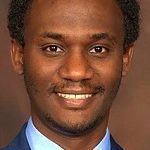 Jerome Powell responds to questions at the FOMC press conference Wednesday.
Jerome Powell responds to questions at the FOMC press conference Wednesday.
Credit/Federal Reserve
Fed Chair Jerome Powell said Wednesday's 25 basis-point rate hike could be followed by a pause if inflation continues to dwindle.
But credit union analysts said Powell made it clear he was ready to raise rates again at its next meeting in September if progress is insufficient.
Recommended For You
The Federal Open Market Committee (FOMC) raised the target for the Federal Funds Rate to 5.25% to 5.50%. It raised rates from near zero in March to a 5.00% to 5.25% range in May, then paused in June.
"The decision to raise interest rates suggests the committee is still wary of declaring mission accomplished on inflation, despite recent economic data indicating long-awaited improvements," NAFCU Economist Noah Yosif said.
Charles Krawitz, chief capital markets officer at Alliant Credit Union of Chicago ($19 billion in assets, 785,337 members), said Wednesday's rate hike shows the Fed's determination to continue raising rates until it believes its 2% inflation goal will be reached.
 Charles Krawitz
Charles Krawitz "After another potential rate increase in September, it is largely assumed that rates will stabilize and then start to head down," Krawitz said "While the precise timing of these movements remains conjecture, the overall trajectory seems to be widely embraced."
Powell said the Fed will stop raising rates and will begin cutting rates before inflation reaches 2%, but when the FOMC members are confident inflation will fall to that goal.
Rate cuts won't start this year, but could start next year if FOMC members are confident the inflation goal will be reached, Powell said.
Powell said FOMC members were insufficiently impressed by reports this month from the U.S. Bureau of Labor Statistics showing inflation slowing:
- The Consumer Price Index for All Urban Consumers (CPI-U) rose 0.2% in June on a seasonally adjusted basis after increasing 0.1% in May. Over the last 12 months, the all items index increased 3.0% before seasonal adjustment
- The CPI for all items less food and energy rose 0.2% in June, the smallest one-month increase in core inflation since August 2021. It was up 4.8% over 12 months.
- The seasonally adjusted Producer Price Index rose 0.1% from May to June for total final demand and the same amount after excluding foods, energy and trade. Unadjusted, the 12-month total increase was also 1.1%.
Powell said the reports were good, and the CPI drop was better than expected, but still "broadly in line with expectations."
"It's only one report, one month's data," Powell said. "We hope that inflation will follow a lower path … consistent with the CPI reading, but we don't know that and we're just going to need to see more data."
The FOMC will analyze two inflation reports and two jobs reports before its next meeting Sept. 19-20.
"Policy has not been restrictive enough for long enough to have its full desired effects," Powell said. "So we intend to keep policy restrictive until we're confident that inflation is coming down sustainably toward our 2% target, and we're prepared to further tighten if that is appropriate. And we think the process still probably has a long way to go."
Yosif of NAFCU said the seven-week break between meetings will be critical for confirming consistent erosion in inflation.
 Noah Yosif
Noah Yosif "By assuming a cautious approach in its forward guidance, the committee reaffirmed its belief that the economy remains capable of withstanding pressure from rising interest rates, and its preference to leave the door open for 'additional policy firming' if the rise in real rates is insufficient to tackle inflation," Yosif said.
Mike Fratantoni, chief economist for the Mortgage Bankers Association, said Wednesday's rate hike should be the last for this economic cycle, but the Fed will "hold off on any rate cuts until we are well into 2024."
 Mike Fratantoni
Mike Fratantoni "We do expect mortgage rates to trend down once the FOMC clearly signals that they have reached the peak for this cycle," Fratantoni said. "The reduction in uncertainty with respect to the direction of rates should narrow the spread of mortgage rates relative to Treasury benchmarks."
CUNA Senior Economist Dawit Kebede said the interest rates were already restrictive and credit conditions tight for businesses and households before the FOMC met.
 Dawit Kebede
Dawit Kebede "Since monetary policy impacts economic activity with a lag, it is more appropriate to wait and see as factors causing inflation are easing," Kebede said. "Additional rate hikes reduce the probability of a soft landing where prices come down to target without causing economic pain."
© Touchpoint Markets, All Rights Reserved. Request academic re-use from www.copyright.com. All other uses, submit a request to [email protected]. For more inforrmation visit Asset & Logo Licensing.







